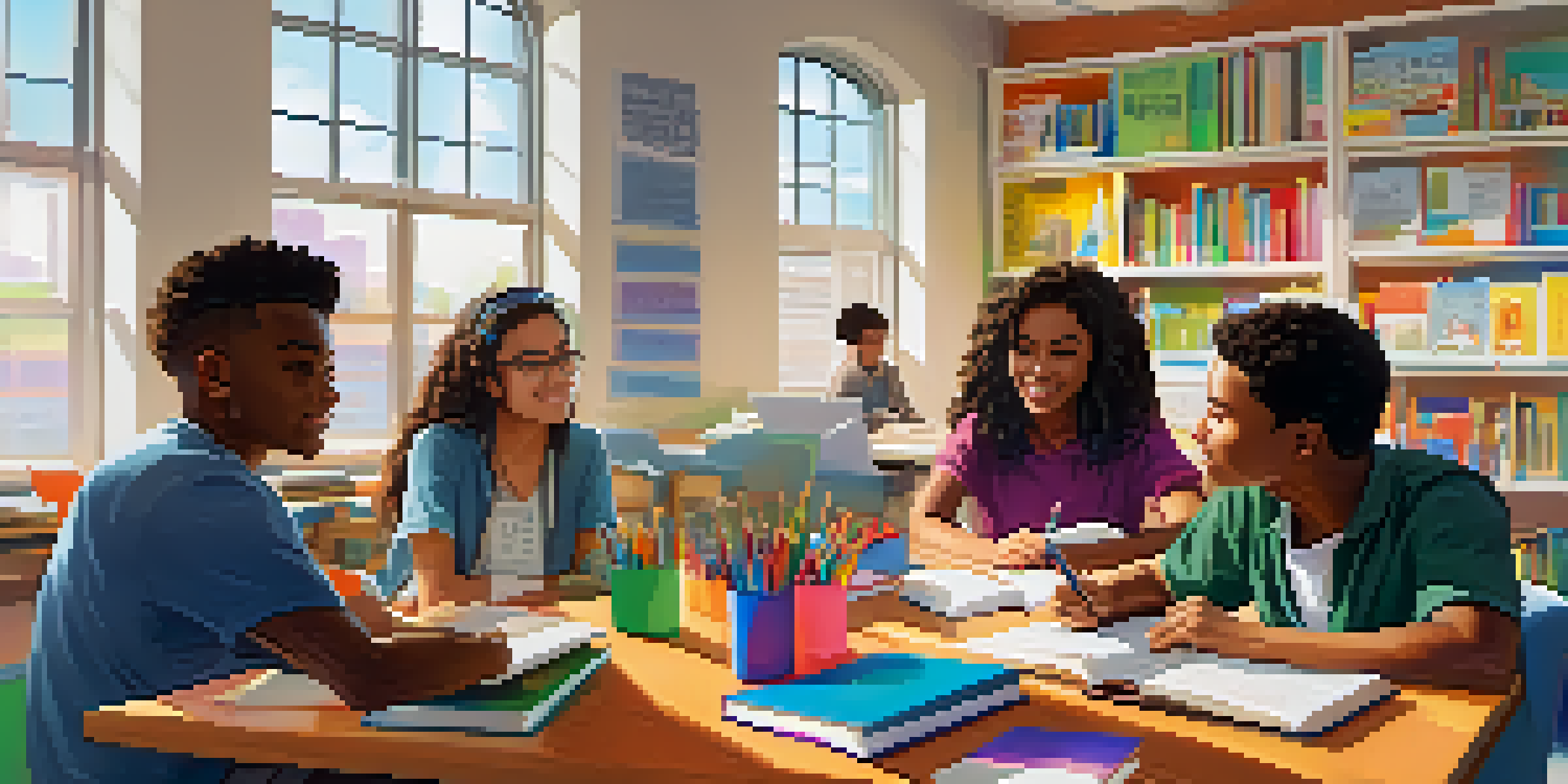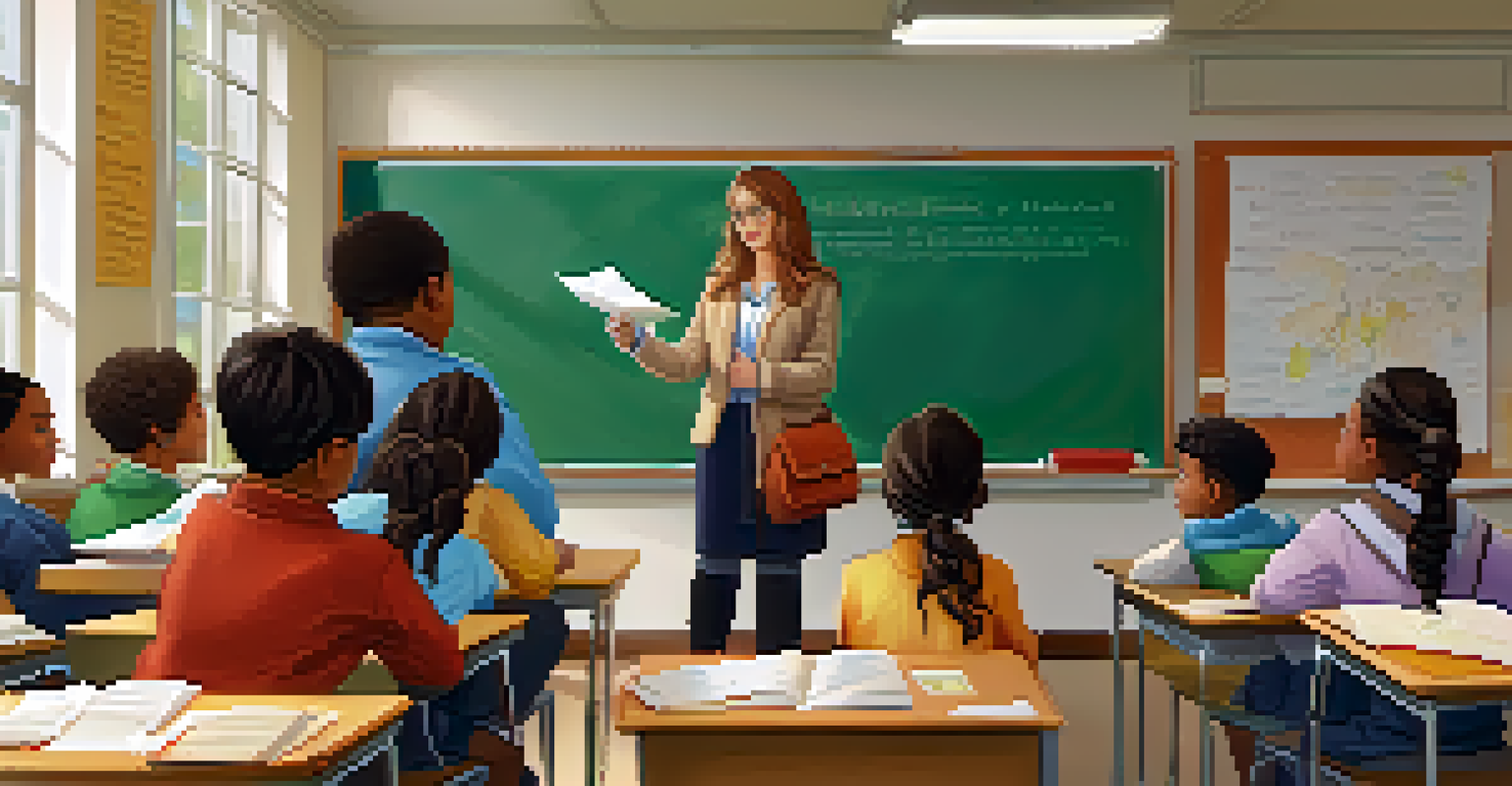Collaborative Learning for Enhancing Critical Literacy Skills

Understanding Critical Literacy and Its Importance
Critical literacy goes beyond basic reading and writing; it empowers individuals to analyze and question texts. This skill is essential in today's information-rich society, where discerning between reliable and unreliable sources is crucial. By fostering critical literacy, we enable learners to engage actively with content rather than passively receiving it.
Education is not the filling of a pail, but the lighting of a fire.
The importance of critical literacy cannot be overstated, as it nurtures a questioning mindset. This approach encourages students to think deeply about the messages they encounter in various forms of media. As they develop these skills, they become more informed citizens ready to participate in democratic processes.
Moreover, critical literacy fosters empathy and understanding by prompting learners to consider perspectives different from their own. This is especially vital in our increasingly diverse world, where effective communication and collaboration are key to solving complex problems.
What Is Collaborative Learning?
Collaborative learning is an educational approach where students work together to solve problems or complete tasks. This method not only enhances academic performance but also encourages social interaction and teamwork. By sharing knowledge and skills, learners can achieve deeper understanding through collective effort.

In collaborative learning environments, students often take on different roles, allowing them to contribute their unique strengths. This diversity of thought enriches discussions and fosters creativity, as participants challenge each other's ideas and viewpoints. As a result, learners develop critical thinking skills that are essential for literacy.
Critical Literacy Empowers Engagement
Fostering critical literacy enables individuals to analyze texts and actively engage with diverse media.
Additionally, collaborative learning promotes a sense of community in the classroom. When students work together, they build relationships and trust, creating a supportive atmosphere where everyone feels valued. This camaraderie is instrumental in enhancing overall learning outcomes.
The Connection Between Collaboration and Critical Literacy
Collaborative learning and critical literacy are intertwined, as both emphasize active engagement and reflection. When students collaborate, they are encouraged to question assumptions and explore multiple perspectives, which sharpens their analytical skills. This interaction not only deepens comprehension but also enhances critical literacy.
The greatest sign of success for a teacher is to be able to say, 'The children are now working as if I did not exist.'
For example, when students work in groups to analyze a text, they discuss various interpretations and challenge each other's viewpoints. This process not only hones their analytical abilities but also helps them articulate their thoughts more clearly. Engaging in discourse pushes students to defend their ideas and consider counterarguments.
Furthermore, collaboration fosters a culture of inquiry, where questioning becomes the norm. This environment empowers students to take ownership of their learning, enabling them to become critical thinkers who are not afraid to explore complex ideas or challenge the status quo.
Strategies for Implementing Collaborative Learning
To effectively integrate collaborative learning into the classroom, educators can use diverse strategies such as group discussions, peer reviews, and cooperative projects. These activities encourage students to share their insights and learn from one another, fostering a richer understanding of the subject matter. Incorporating technology, like discussion boards or collaborative documents, can also enhance these interactions.
Another effective strategy is to assign roles within groups, ensuring that each student has a clear responsibility. This not only promotes accountability but also allows students to leverage their individual strengths for the benefit of the group. By rotating roles, learners can experience various perspectives and develop a well-rounded skill set.
Collaboration Enhances Learning
Collaborative learning promotes teamwork and deeper understanding through shared knowledge and diverse perspectives.
Finally, setting clear goals and guidelines for group work is crucial. Establishing expectations helps students stay focused and ensures that everyone is contributing meaningfully. Regular feedback and reflection sessions can further enhance the collaborative experience, allowing students to assess their progress and make necessary adjustments.
Overcoming Challenges in Collaborative Learning
While collaborative learning offers numerous benefits, it can present challenges, such as unequal participation or conflict among group members. Addressing these issues requires proactive strategies from educators to ensure that all voices are heard and valued. Encouraging open communication and establishing norms can help create a respectful and inclusive environment.
Additionally, it's essential to provide students with the tools to navigate conflicts productively. Teaching conflict resolution skills can empower learners to address disagreements constructively, enhancing their interpersonal skills. These experiences not only contribute to their critical literacy but also prepare them for real-world situations.
Lastly, continuously assessing group dynamics and individual contributions can help identify any imbalances early on. By monitoring progress and providing support where needed, educators can ensure that collaborative learning remains a positive and effective experience for all students.
Assessing Critical Literacy Skills in Collaborative Settings
Assessing critical literacy skills in collaborative learning environments can be challenging, yet it's crucial for understanding student growth. One effective approach is to use formative assessments, such as reflective journals or group presentations, that allow students to demonstrate their understanding. These assessments provide valuable insights into how well students are applying critical literacy skills in collaborative contexts.
Peer assessment is another valuable tool, as it encourages students to evaluate each other's contributions. This not only fosters accountability but also helps students develop critical evaluation skills. By providing structured rubrics, educators can guide students in giving constructive feedback, further enhancing their critical literacy.
Future Focus on Critical Skills
As education evolves, integrating collaborative learning and critical literacy prepares students for real-world challenges.
Finally, incorporating self-assessment encourages students to reflect on their learning journey and identify areas for improvement. By fostering a habit of self-evaluation, students become more aware of their strengths and challenges, ultimately leading to greater agency in their learning process.
The Future of Collaborative Learning and Critical Literacy
As education continues to evolve, the importance of collaborative learning and critical literacy will only grow. With the rise of digital tools and online learning platforms, opportunities for collaboration are expanding beyond the traditional classroom. This shift allows learners to engage with peers from diverse backgrounds and perspectives, enriching their critical literacy skills.
Moreover, the integration of collaborative learning into various subjects can make critical literacy a core component of education. By embedding these practices into the curriculum, educators can prepare students for a complex world that demands critical thinking and effective communication. This forward-thinking approach will equip learners with the skills necessary to thrive in their personal and professional lives.

Ultimately, embracing collaborative learning as a means to enhance critical literacy skills can transform educational experiences. It cultivates a generation of informed, empathetic individuals ready to navigate the complexities of the modern world, fostering a culture of inquiry and collaboration that benefits society as a whole.